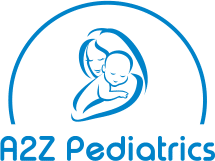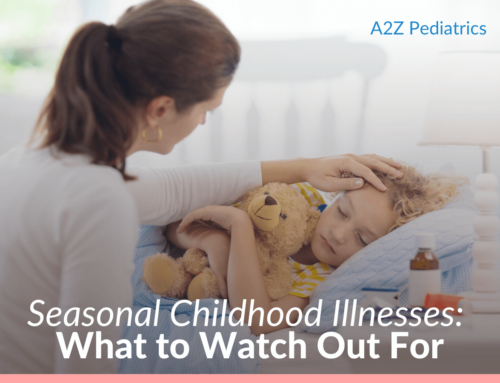Allergy Testing and Treatment in Children
Allergic reactions occur when the immune system of a child reacts to substances that are usually harmless, such as pollen, foods, and house dust mites. These substances (allergens) do not pose a problem for most people. Allergies can affect children of all ages. Identifying allergies early improves the quality of life and minimizes allergy symptoms. Allergic reactions can be triggered by an indoor irritant, an outdoor irritant, or food.
Every child is evaluated physically and based on their background to diagnose and treat acute allergies. Doctors perform blood- and skin tests to determine a child’s allergies. Skin pricking provides quick, painless, and immediate results. When your child exhibits allergy symptoms, schedule an appointment with the Bolingbrook IL Pediatrician. Allergic reactions may include the following:
- breathing difficulties
- congestion, runny nose, or sneezing
- coughing
- itchy eyes
- Rashes on the skin
- upset stomach
Before your appointment, keep a record of your symptoms and exposures. There may be a pattern that your doctor can spot. Allergy tests can identify specific allergies in your child. Allergic children may develop symptoms that interfere with:
- Sleep
- School
- Diet
- General health and well-being
To ensure your child’s safety, you should contact your doctor if you notice any of the above symptoms in your child or visit the Bolingbrook Health Clinic to get your child tested at the earliest.

Procedures and Treatments for Allergy Diagnosis and Treatment
Testing of The Skin
Skin prick tests are a reliable and straightforward way to determine your child’s allergies in 15 to 20 minutes. Different allergens (food or environmental) are applied to the skin by scratching a small amount onto the arm or upper back. A favorable response will have an itchy, bumpy, and reddened surface similar to a mosquito bite. After measuring the red spots with a transparent ruler 15 minutes after the allergy testing is performed, it will gradually fade over the next 30 – 45 minutes. If a child is reacting to the allergen that triggered the reaction, it is not always the case that they are allergic to it. Your doctor will do some testing to discover whether your child has an allergy. For your child to tell whether they are allergic to a particular substance, you need to perform a non-reactive skin test.
A Blood Test
It is possible to measure the IgE antibody, an antibody responsible for triggering allergic reactions, in response to specific allergens in the bloodstream. ImmunoCAP is the most popular blood test to test for allergies. The skin test determines if a person is allergic before the blood test. In addition to skin tests, blood tests are sometimes used to test your child for allergies. It is important to remember that a positive blood test does not always indicate an allergy.
Oral Food Intolerance Tests Based on a Graded Scale
The purpose of an allergy test is to determine whether a person is allergic to a particular food. Hospitals or allergy clinics administer food challenges. The doctor and nurse watch over a patient if they have had an adverse reaction. Patients are initially exposed to allergens in tiny amounts, followed by brief observation. A slightly more significant portion of food is given as soon as a reaction is observed. When there is no allergic reaction, the oral challenge continues. It seems unlikely that severe allergic reactions will occur due to oral food challenges because of the low initial dose and the gradual increase in quantity. For patients with unclear allergies to certain foods, they can participate in food challenges, as well as those with food allergies that have resolved.
Immunotherapy Administered Orally
With oral immunotherapy (OIT), your child can tolerate the allergen through consumption. The OIT program aims to decrease your child’s sensitivity to allergic foods. By accidentally eating an allergen, a child can reduce the risk of suffering a life-threatening allergic reaction. This process is known as desensitization.
To find a safe starting amount of your child’s allergic foods, an Initial Escalation would be the first step. Depending on your child’s allergy symptoms, your doctor will be able to determine the correct dosage. Consequently, your child will consume a small amount of this food every day at home. Increasing the dose is done in incremental amounts until the prescribed serving amount is reached every two to four weeks. A dose adjustment is known as a dose adjustment visit.
OIT is a good option if:
- You can give your child a safe starting dose of the allergen.
- If your child cooperates, the food can be eaten regularly.
- It is possible to provide the allergen to your child every day.
- Depending on how smoothly the process goes with your child, your child’s clinic visits may last about six months.
Testing For Drug Allergies
Occasionally, allergy skin tests can be helpful for patients suspected of being allergic to medicines. An oral dose of the medication is often given to patients to test for allergies. It is carried out in either an Allergy Clinic or a hospital, depending on the severity of the previous reaction. Based on the medication and the child’s side effects history, the challenge can take the form of a single dose or gradual dosing. A physician and nurse monitor the patient, and medicines can be given to reverse any response.
Pulmonary Function Testing
Pulmonary function testing aims to determine the best way to control asthma in children. PFTs are also in use to diagnose other respiratory disorders. Typically, children around six or older are tested for their pulmonary function.

A2Z Pediatrics
550 E Boughton Rd #110
Bolingbrook, IL 60440
Email: info@azmedpeds.com
Phone: 630-755-5437
Website: https://azmedpeds.com/

